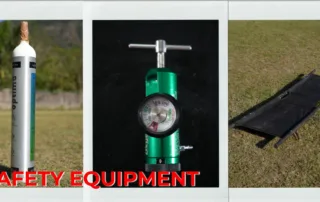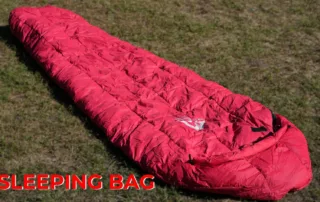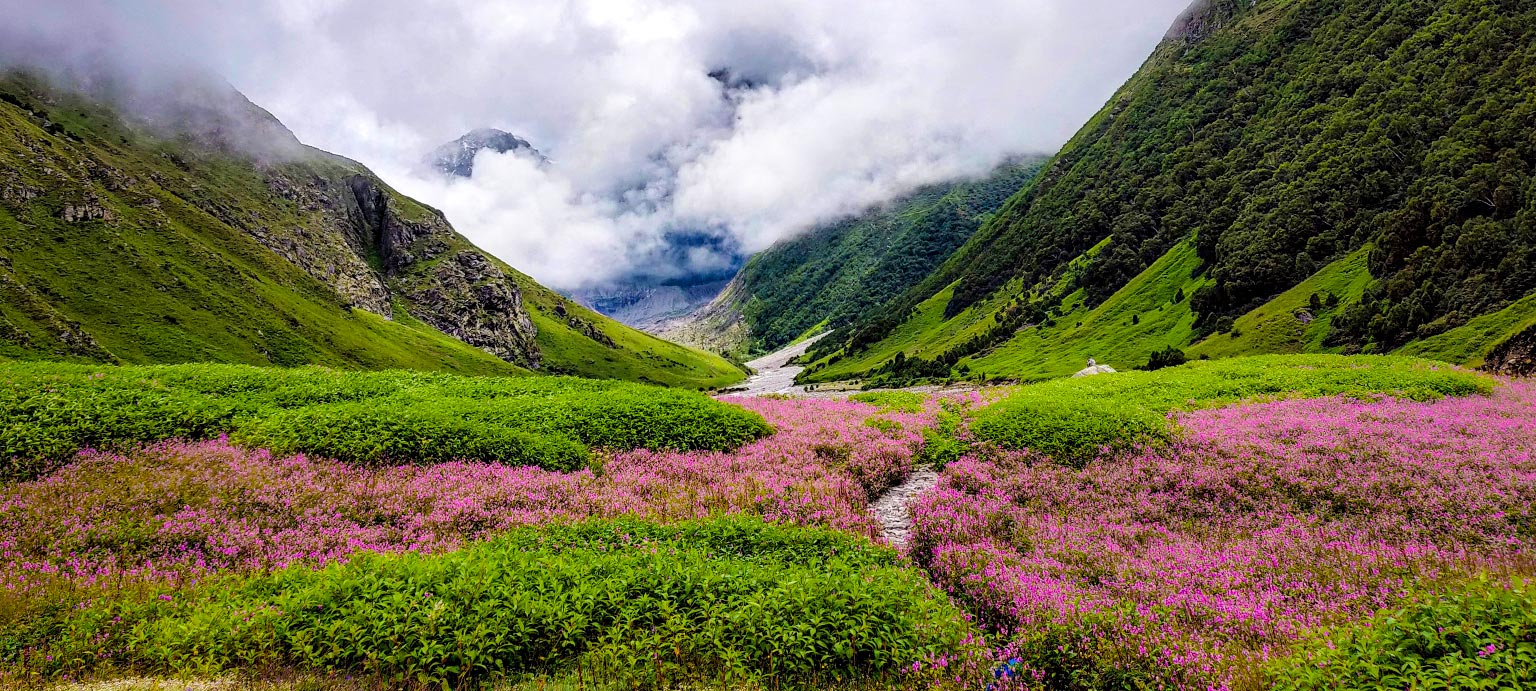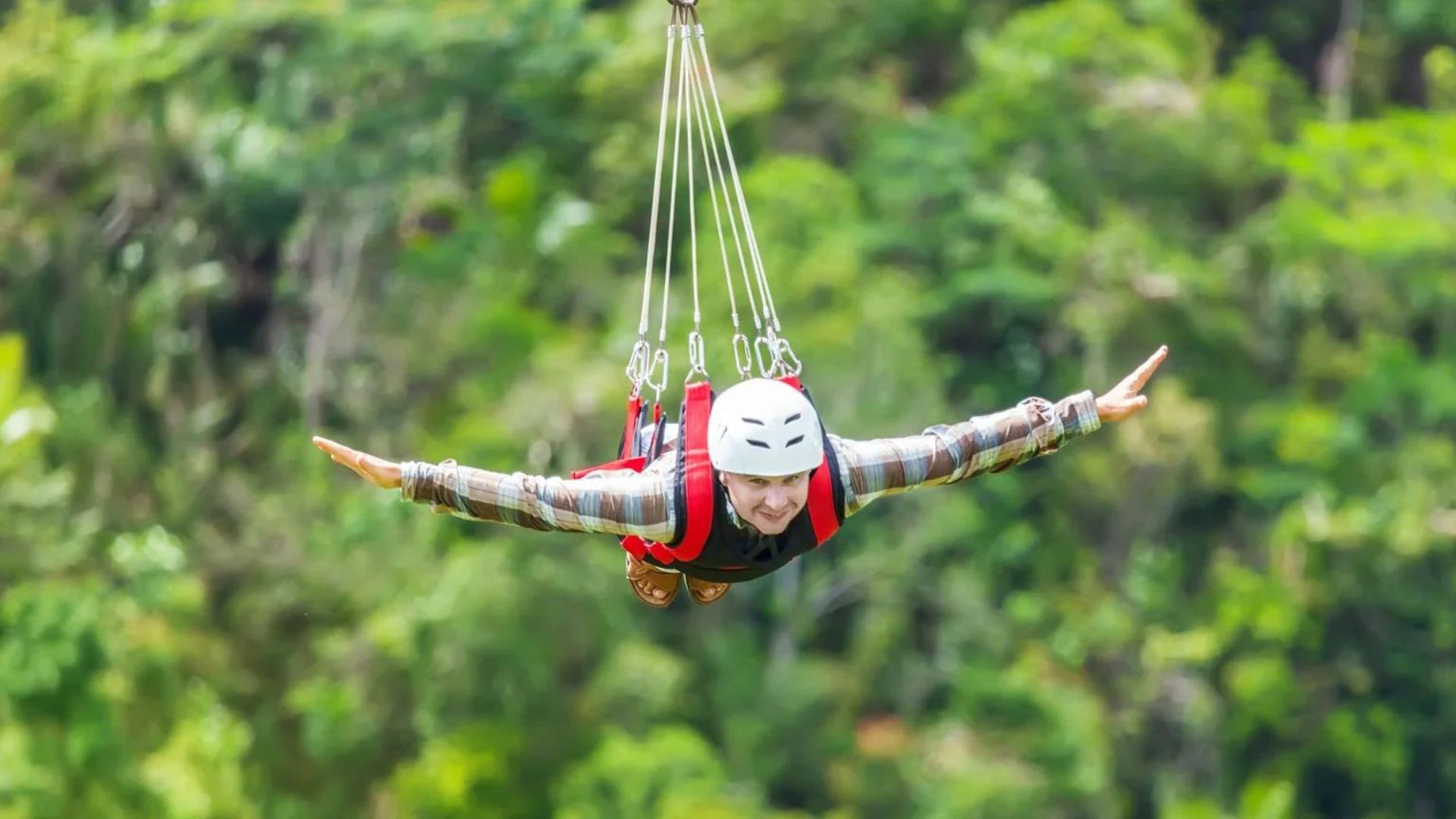Roopkund Trek 2024
Price for one tour per person
INR 13,700/-

Region
Uttarakhand | India

Duration
8 Days

Max Altitude
15696 Ft.

Trekking Km
53 KM

Grade
Moderate to Difficult
Fixed Departure Dates
+5% GST (Goods and Services Tax)
- Services from Kathgodam to Kathgodam Transportation Included
Trek overview
Through extensive research, human skulls, bones, and jewelry were discovered. DNA analysis of the skeletons revealed that the individuals belonged to various social classes and exhibited different physical features and morphological structures. Among them, there was a group of both short and tall individuals, believed to be closely related. Although the exact number of skeletons cannot be confirmed, it is estimated that around 500 skeletons were found. It is also believed that a similar number perished due to the harsh natural environment.Radiocarbon dating of the skeletons at the Oxford University Radiocarbon Accelerator Unit placed their age around 850 AD. Subsequent research, both in India and globally, led many scientists to conclude that the people did not die from an epidemic but from a catastrophic hailstorm. The hailstones, reportedly the size of cricket balls, might have caused widespread fatalities, as there was no shelter in the exposed Himalayan regions. This natural disaster is considered one of the primary reasons for the extinction of this group.
The preservation of the skeletons over such a long period can be attributed to the cold and icy weather conditions, which prevented the bodies from decaying and decomposing into the soil. Frequent landslides in the area led many bodies to slip into lakes, where they were preserved for a longer time compared to those left exposed to the elements. However, it remains unclear whether these people lived in the area or were en route to another destination. There is no historical evidence of a trade route leading to Tibet, making it difficult to determine their exact purpose. One theory is that they may have been heading towards the Nanda Devi pilgrimage, where the Nanda Devi Raj Jat festivities are held every 12 years.
The Roopkund Trek, often referred to as the “Skeleton Trek,” starts at Lohajung and leads trekkers to the lake, which is surrounded by snow-covered mountains and rocky glaciers. The journey to Roopkund is an adventurous one, passing through lush green meadows, conifer forests, and scenic hills. The trek follows the Pindar River, allowing trekkers to enjoy the natural beauty of the area, accompanied by a pleasant breeze that soothes the senses.
Roopkund is a beautiful and picturesque destination in the Himalayas, located at the base of two peaks, Trishul and Nandghungti. The area attracts adventurers and nature lovers alike. In autumn, the alpine meadow of Bedni Bugyal hosts religious festivals, with nearby villages taking part. The lake remains frozen year-round, adding to its charm. Surrounded by towering mountains, it offers an unforgettable trekking experience in Uttarakhand, where you can also explore the Nanda Rajjat Yatra.There are multiple routes to reach Roopkund, with the most common starting at Lohajung, where travelers can drive to a certain point before beginning the trek. Along the way, there are flat areas perfect for camping. On clear days, views of Bedni Bugyal and Trishul are visible. Trekkers will pass through grazing lands for horses, sheep, and mules, and encounter several temples and lakes. Numerous waterfalls also dot the slopes of the surrounding mountains. However, it’s important to note that the weather in this region is often harsh, so trekkers should be well-prepared and equipped for the challenging conditions.
Details Itinerary
The journey will take no more than 10 hours, including one or two breaks. The winding road passes through the Kumaon region, navigating deep valleys of the Shivalik mountain ranges. It leads to Gwaldam, located in the Garhwal administrative district. The road winds through coniferous forests with sharp curves. While there is a direct road from Gwaldam to Deval, the final destination for the day, it is not recommended due to damage from the constant rains throughout the year.
Alternatively, the route via Nandkesri covers a shorter distance of about 11 km, but it is safer to take the longer trail through Tharali, which is approximately 36 km. After about two hours of travel, you will reach Deval, a village where you can purchase food and kerosene for the remainder of your journey.
The final stretch from Deval to Lohajung is characterized by steep, winding roads that climb to higher altitudes. The roads are so thrilling that even the slightest encounter with oncoming vehicles can give you goosebumps. The weather is often rainy and foggy, with very cold temperatures. You will spend the night at a tourist rest house or nearby lodges.

The trek begins today. After a nourishing home-cooked breakfast, you’ll start the walk on level ground with a gentle ascent along the jeep road, which leads to the village of Wan. A 90-minute walk on this flat trail will bring you to Kulling, about 6 km from Lohajung. Kulling is a tranquil village in the Garhwal district, with a small population and surrounded by stunning natural beauty. The air is fresh, and exotic birds are easy to spot.
After a break at Kulling, you will take a right turn and begin a gradual descent towards the village. The trail starts with a narrow concrete path that cuts through houses and fields, leading to a small stream fed by the Neel Ganga River. Continue descending until you reach the riverbed. Cross the cemented bridge and then begin ascending the ridge on the right side. The trail becomes moderately steep, leading you to the village of Didna, located at an altitude of 2,450 meters (8,000 feet).
The path takes you through dense, evergreen alpine forests, with towering trees along the way. After about two hours of climbing, you’ll reach the top of the ridge, where the views are breathtaking. It’s surprising to find such large open lands at this high altitude, nestled in the mountains. Didna and Kulling are two nearby villages that host similar communities and trekkers. Kulling is inhabited during the summer and monsoon months, while Didna is popular during the winter.The day’s trek ends around 3 pm, followed by a hot lunch. The total distance covered is approximately 10 km, and the night will be spent in a traditional guesthouse.
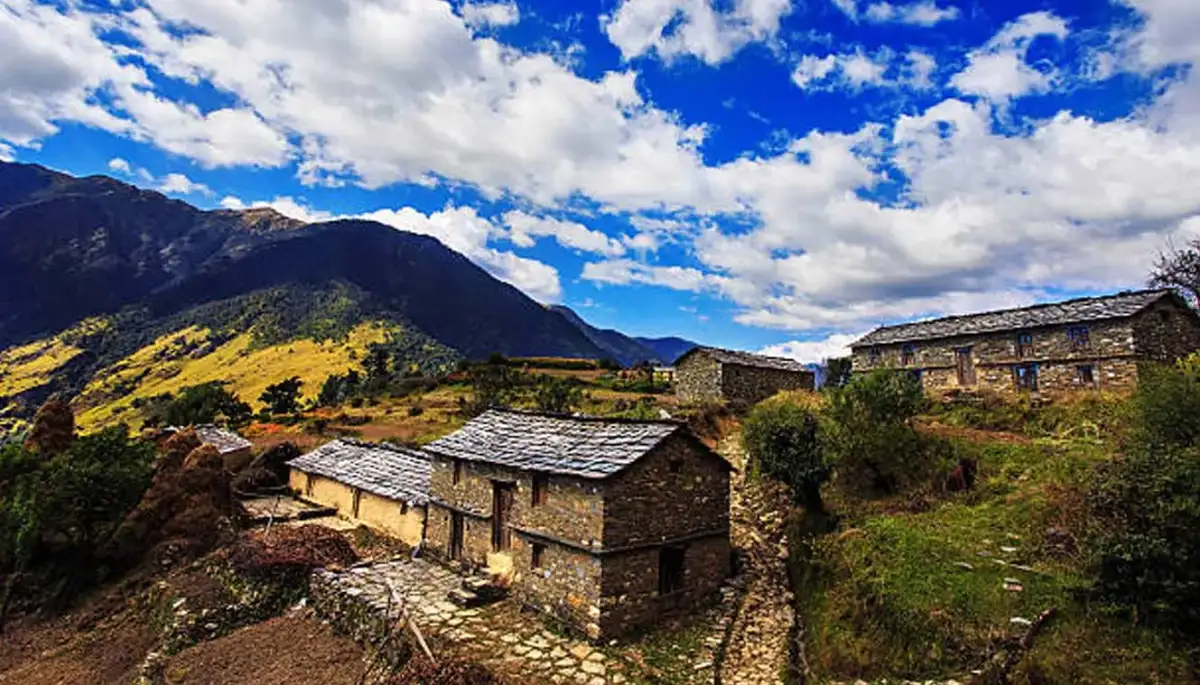


Rise early and prepare for what will be the most demanding day of your trek. Start with a hearty breakfast and some essential stretching exercises. Keep in mind that today’s journey covers approximately 10 kilometers, with a challenging ascent throughout. Your goal is to reach Bagubasa, situated at an altitude of around 14,000 feet.
The route takes you past the Kalyuvinayak Temple, a highlight of the day’s trek. To reach this sacred site, you’ll need to climb a steep 2-kilometer path that gains around 200 feet in elevation. The trail is rugged and zigzagging, making it vital to have the proper safety gear and clothing before setting out. Walk at a steady and cautious pace, as a single misstep could lead to injury. Yet, as the saying goes, no pain, no gain—the reward at the top is well worth the effort.The Kalyuvinayak Temple, built in a traditional style, stands as a testament to human resilience and faith, perched at such a height for centuries. The stone-carved structure, with its intricate precision, evokes a sense of divine presence. As you ascend, the thinning air and reduced oxygen levels may cause headaches or stomach discomfort, so take short breaks when needed.From the temple, you’ll catch your first glimpse of Roopkund, the final destination of your trek. The view is breathtaking, with the majestic Trishul peak gleaming on one side and the bell-shaped Nandagunti on the other. Continue along the uneven trail for another kilometer to reach Bhaguabasa, where you’ll find a unique landscape adorned with flowers that bloom during the monsoon months. Standing at 14,000 feet, the terrain here is rugged and challenging, offering both awe and the anticipation of the journey ahead.

Day 7 marks the final day of your trek, as you make your way back to the starting campsite from Day 1. Descending is an entirely different challenge compared to climbing, even if the path remains the same. This time, you’ll follow the trail on the right side, which feels simpler after the demanding climbs of previous days.As you set out, you’ll spot charming wooden huts scattered along the trail. Not far into your journey, the road splits into two lanes—be sure to take the right path, which leads downhill. The descent gradually brings you back into the forest, with towering trees lining the trail. The sound of birdsong and the cool breeze brushing past your face offer a rare and soothing experience.Due to the changing slope, it’s important to step carefully to avoid injuries. Tempting shortcuts should be avoided, as the rough terrain can be dangerous. After some time, you’ll come across a clearing in the forest known as Gahroli Patal. From there, continue onward until you reach the banks of the Neel Ganga River. This serene spot signals that you’re nearing the end of your journey, leading to Ran ka Dhar in the village of Wan.Wan is a warm and welcoming place, a large village surrounded by hills and mountains—a sight that will stay with you forever. As you reach the main road, a vehicle will be waiting to take you on the final leg back to Lohargunj. This leg of the trek covers about 18 kilometers and takes approximately 10 hours. The drive from Wan to Lohargunj takes around an hour, following a rocky road.Once back at the guest house, you can relax and relive the memories of your trek, finally resting on a comfortable bed and savoring the sense of accomplishment from completing this incredible journey.

Start early on this day to reach the ultimate destination – Roopkund. Situated at an altitude of over 16,000 feet, it is the highest point on the trek. While the path is not overly complicated, the 4 km walk will still challenge you, leaving you breathless and exhausted. But after all, no trekking experience is easy, right? During the monsoon, the snow in the area is minimal and shallow, which allows the path to be clearly visible.Your first checkpoint from Bhaguabasa is Chhirianag, meaning “ladder-like snake.” From here, the next destination is Roopkund – the Mystery Lake. Known for its skeletal remains, this lake is one of the most mysterious places in the world. Despite numerous studies by archaeologists and scientists, the origin of the skeletons remains unsolved. One popular theory suggests that a king and his followers, traveling to Nanda Devi, were caught in a severe hailstorm, leading to their deaths. If you’re fortunate, you may spot up to 300 human skeletons along the lake’s edge, a sight that is both haunting and awe-inspiring.After this unforgettable experience, the trek continues on a steep and rugged path. Once you conquer the ascent, you’ll reach the Nanda Devi Temple, located near the Nanda Devi Biosphere Reserve. This is a perfect spot for group photos with fellow trekkers. Depending on weather conditions and your fellow climbers’ stamina, the group may choose to take on the Junargali Pass, which stands at 16,700 feet. If the weather is clear, it will take about 45 minutes to reach the pass.On the way back, you’ll descend through Bhagwabasa, which is known as the “abode of the tiger.” The descent is even more challenging than the ascent – so steep that you may feel as though you’re at risk of falling. As you continue downward, you’ll encounter a cave-like structure, Bhagwabasa, before reaching Patar Nachuni at 12,500 feet. The descent continues through Ghora Lautani back to Bedni Bugyal, where you’ll end the day at a campsite nestled among lush greenery.This is one of the longest days of the trek, covering a distance of over 15 km, which will take 10-15 hours to complete. By the end, your legs will demand rest, but take a moment to reflect on the immense determination and courage required to complete such a challenging trek.

Wake up early in the morning; have a nice cup of tea and an awesome hillside breakfast. Today you will leave for Lohargunj, along with all the beautiful and unforgettable memories pack your own stuffs and luggage. Your cab will drop you at the Kathgodam railway station. The car journey will take something around 10 hours, and do make sure that you are carrying mint and tablets which prevent nausea. From Kathgodam railway station, you will find trains to various locations. Board your respective train and take along a healthy experience with memories that will never fade away.
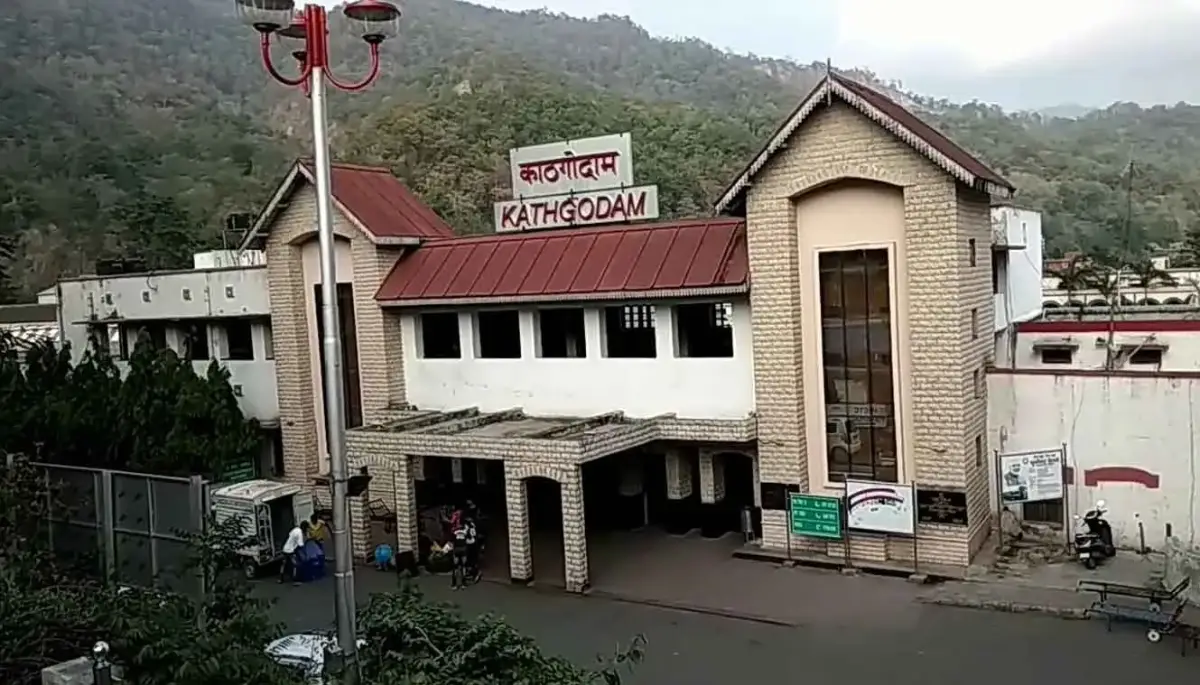
Who Can Participate
Age: 15 years or older.
Experience: At least one high-altitude trek, reaching a minimum of 4,000m (13,100ft).
Fitness: The climber must be physically fit with sufficient stamina to cover 5 km in 30 minutes or 10 km in 60-70 minutes without undue fatigue.
Backpack: The climber should be capable of carrying a 12-13 kg backpack.
Special Offer
Make a single payment and trek as many times as you like.
If you book a trek with Trek The Himalayas and are unable to complete it, or if you have successfully completed the trek and wish to do it again, you can repeat it as many times as you want at no extra cost.
Terms and conditions
This offer is non-transferable and applicable only to Trek The Himalayas’ limited fixed departures.
valid for 5 years from the date of booking. The offer is not valid if the participant has received a cash refund or voucher due to cancellation.
Participants are not required to pay the trek cost, but they must cover transportation and trek permit fees.
To reserve a spot for a trek or adventure program, you can either use our online booking form or call us at the provided number. A deposit, including the initial payment, must be made to confirm your booking.
- Pulse rate at rest must be in between (60 to 90 beats per minute).
- Blood Pressure Reading must be in between (DIASTOLIC 70 – 90, SYSTOLIC 100 – 140 mm Hg).
- Respiratory rate at rest must be in between (12 to 20 breaths per minute).
- Should not have Liver and kidney issues.
- Should not have Diabetes Mellitus, Bronchial Asthma, Heart problems, Hypertension, etc.
- No pacemaker implant.
- People with Sinus issues, Epilepsy please contact to trek coordinator before booking the trek.
- If your BMI is not normal, Please contact our Trek coordinator before Trek booking.
- Government Employees can avail the benefit of Special Casual Leave (SCL) when they join us for a trekking expedition. As per the rules of the Pay Commission, Special Casual Leave can be availed for up to 30 days in a calendar year for trekking/mountaineering expeditions through a registered organization. Lets Go UbEx is a registered adventure tour operator by the Indian Mountaineering Foundation (IMF) and the Ministry Of Tourism (MOT).
- Trekkers have to apply for leave at least 20 days before the trek departure date.
- This service is exclusive to Indian government employees and is applicable only for treks within India.
- Do mail at info@letsgoubex to apply and mention your booked trek date and trek name.
- Junior trekkers (below 15 years) should have a company of parents/guardians.
- Trekkers between 15 to 18 years can come solo with the disclaimer form signed by parent/guardian.
-
Pick-Up Information
It is essential for everyone to arrive at Rishikesh (06:00 am).
Pick-up Location – Tapovan, Landmark – Nainital Bank opposite Shiv Vilas Hotel.
Once you have reached Rishikesh, LET’S GO UbEx will manage the rest of your travel arrangements if you have opted for LET’S GO UbEx’s pick-up service. You can select this option during the booking process by adding it as an add-on.Options to Reach Rishikesh
- Take an overnight train/bus to Rishikesh.
- Take an overnight train/bus to Haridwar and drive to Rishikesh (25 km | 35 min drive with normal traffic).
- Take an overnight train/bus to Dehradun and drive to Rishikesh (50 km | 1 hr 20 min drive with normal traffic).
(We always recommend going for government buses over private ones outside the bus station, as our experience has shown that private buses have a higher chance of delays. Government buses are generally more reliable. Whichever bus you choose, ensure you reach Rishikesh at least by 05:30 am.) - Board a flight to Dehradun airport (Jolly Grant Airport) (21 km, 30 min). If arriving by air, come one day in advance.
Drop-Off Information
The designated drop-off point is Tapovan, Rishikesh.
Reach Rishikesh by 6:30 to 7:30 pm.
Please consider planning your subsequent travel arrangements after 10:00 pm.Note – During July and August, always have a buffer day in your itinerary due to the monsoon.
It’s highly advisable to keep a buffer day in your travel plan. If the buffer day is not used, it can be spent exploring Rishikesh.
(If you prefer to travel independently to the base camp and don’t want to take LET’S GO UbEx’s pick-up service, you can either take a government bus or book a private cab from Rishikesh. Your trek coordinator will provide guidance on arranging the bus or cab booking.)LET’S GO UbEx offers comfortable transportation through Tempo Traveler, Bolero, or equivalent vehicles. If you wish to upgrade your mode of transportation, please contact your trek coordinator for further assistance.
Cost Terms
- Guest Houses and Home Stays.
- Camping during the trek (on a twin-sharing basis).
2. Meals (Veg + Egg):
- Meals while on trek(Veg + Egg).
3.Support:
- Versatile Base Camp Manager: Manages communication and coordinates extra manpower during emergencies.
- Qualified Trek Leader: A professional with mountaineering and first aid training.
- Experienced High-Altitude Chef: Prepares meals suited for trekking conditions.
- Local Experienced Guides: Number of guides varies based on group size.
- Ample Support Staff: Ensures the smooth running of the trek.
4. Trek equipment:
- Camping Gear: Sleeping bag, sleeping liners (if required), mattress, and utensils.
- Tents: 3-person all-season trekker tents (twin-sharing), kitchen and dining tent, toilet tent.
- Additional Equipment: Camping stool, walkie-talkie.
- Safety & Climbing Gear: Ropes, helmet, ice axe, harness, gaiters, and crampons (if required).
5. First aid:
- Medical Equipment: Medical kit, stretcher, oxygen cylinder, blood pressure monitor, oximeter, and stethoscope.
6. Transportation (as per the itinerary):
- Transport: Transport from Loharjung to Loharjung.
- Luggage Support: Mules/porters to carry central luggage.
- Clock Room Facility: Available at the base camp for storing additional luggage.
- Permits & Fees: All necessary permits and entry fees, up to the amount charged for Indian nationals.
- Certificate: Trek Completion Certificate.
1. Insurance is Mandatory.
2. Food during the transit.
3. Any kind of personal expenses.
4. Mule or porter to carry personal luggage.
5. Emergency evacuation, hospitalization charge or etc.
6. Anything not specifically mentioned under the head Inclusion.
7. Transportation (Dehradun to Natin village and return, if not booked with us).
Things can be provided on demand and availability (participant has to pay extra for these things).
1- Satellite phone/set phone – is a type of mobile phone that connects via radio links via satellites orbiting the Earth instead of terrestrial cell sites like cellphones. Therefore, they can operate in most geographic locations on the Earth’s surface.
2- Gamow/PAC HAPO Bag (Portable Hyperbaric Bag) – is a unique, portable hyperbaric chamber for the treatment of acute mountain sickness (AMS), also known as altitude sickness.
3- AEDs (Automated External Defibrillators) – are portable life-saving devices designed to treat people experiencing sudden cardiac arrest, a medical condition in which the heart stops beating suddenly and unexpectedly.
Cancellation terms:
Cancellations prior to 25 days from the start of the Trip
Refund options
- 5% deduction of trek fee
- 100% cash voucher for any trip till one year
- Transfer your trek (any trek, any date) to your friend
Cancellation between 24 days and 15 days to the start of the Trip
Refund options
- 30% deduction of trek fee
- 100% cash voucher for same trip till one year
- 85% cash voucher for any trip till one year
- Transfer your trek (same trek, any date) to your friend
Cancellation between 14 days and 10 days to the start of the Trip
Refund options
- 50% deduction of trek fee
- 80% cash voucher for same trip till one year
- 70% cash voucher for any trip till one year
- Book the same trek, in the same season, with any other batch
- Transfer your trek (same trek, any date) to your friend
Cancellation less than 9 days to the start of the trek
Refund options
- No cash refund
- 20% cash voucher for the same trip till one year
- 10% cash voucher for any trip till one year
- Transfer your trek (same trek, same date) to your friend
Note: If a booking is made using a voucher or discount code, the policies related to vouchers and discounts cannot be modified.
In the unlikely event that LET’S GO UbEx cancels a trek prior to the scheduled departure date:
While it is extremely rare for LET’S GO UbEx to cancel a trek, we understand that unforeseen circumstances or natural disasters may occasionally require us to do so before the scheduled departure. These circumstances could include continuous rain or snow, thunderstorms, snowstorms, landslides, floods, earthquakes, or any other natural calamity that poses a risk to the safety of our trekkers. Additionally, unforeseeable events such as local riots, curfews, pandemics, lockdowns, government orders, or any similar situations that compromise the safety of the trekking experience may also necessitate a cancellation.
In the event of such a cancellation, LET’S GO UbEx will provide you with a voucher equivalent to the amount you paid for the trek. This voucher can be redeemed for any of our treks within the next year, allowing you to still enjoy an adventure with us at a later date.
Note:
The issuance of a voucher is not applicable in situations where you are required to descend from the trek for any reason. The trek leader may make the decision to send you down from the trek due to factors such as insufficient fitness level, symptoms of Acute Mountain Sickness (AMS), high blood pressure, exceeding the designated turn-around-time, health concerns, or if you are found smoking, drinking, or violating the rules set for the trek. In such cases, the provision of a voucher does not apply.
In the rare event that LET’S GO UbEx shifts a trek:
We would like to emphasize that weather conditions in high-altitude areas are highly unpredictable and can undergo sudden changes at any time, irrespective of the day. Additionally, circumstances beyond our control, such as natural disasters, political unrest, pandemics, and lockdowns, may impact the feasibility of conducting a trek. In cases where we are unable to proceed with an event due to such circumstances that are beyond our direct control, we will make every effort to provide you with an alternative trek that is safer and more suitable.In such situations, we will issue a voucher to offset the cost difference between the originally scheduled trek and the alternative trek. This voucher can be redeemed at any time within one year from the date of issue. Please note that a refund fee or reimbursement of the cost difference is not applicable in these cases.
Note:
- Change of trek batch is dependent on the availability of seats in the batch.
- In case of transferring a trek to a friend, he/she should satisfy all the mandatory requirements put forward by LET’S GO UbEx.
- LET’S GO UbEx holds the right to change/cancel the policies, without prior notice.
- Cash refund is applicable only in case of bookings made without using any promotional offer code or vouchers.
Cash Voucher Terms:
- This is a non-transferable voucher.
- The voucher cannot be merged with any other offer of LET’S GO UbEx.
- The voucher is valid for treks booked directly with LET’S GO UbEx in India.
- To avail the voucher, please use your registered phone number or e-mail id.
- All the other terms of booking a trek with LET’S GO UbEx are applicable to the voucher.
- LET’S GO UbEx holds the rights to add/remove any of the terms and conditions without prior notice.
Itineraries are based on information available at the time of planning and are subject to change. “LET’S GO UbEx” reserves the right to change expedition dates, people, or itineraries as conditions warrant. If a trip must be delayed or the itinerary changed due to bad weather, road conditions, transportation delays, government intervention, airline schedules, sickness, or other contingencies for which LET’S GO UbEx or its agents cannot make provision, the cost of delays and/or other changes are the responsibility of the participant. LET’S GO UbEx reserves the right to decline or accept any individual as a trip member for any reason whatsoever.
Trek Essentials
Personal Equipments
| Backpack with rain cover | (50 – 60 ltr) with comfortable shoulder straps |
| Day pack with rain cover | 20 – 30 ltr (If off-load opted) |
| Walking stick | Advisable (At least one) |
| Water Bottle / Hydration pack | 2 bottles of one liter each, People who use hydration pack 1 hydration pack and 1 bottle of one liter, Carry at least one thermos flask. |
| Small size tiffin/lunch box | 1 Nos |
| Snacks | Energy bars, dry fruits, electral/ors |
| Personal Medical Kit | Consult your doctor |
| T-Shirt (Synthetic quick dry) | 1 Full & 2 Half sleeves |
| Fleece T-shirt | 1 Nos |
| Wind stopper / Fleece jacket | 1 Nos |
| Windproof Jacket | 1 Nos |
| Down feather / Hollow jacket | 1 Nos |
| Thermal inner (Upper and Lower) | 1 Pair |
| Trek Pant (Synthetic quick dry) | 2 Nos |
| Wind stopper / Fleece Pant | 1 Nos |
| Waterproof gloves | 1 Pair |
| Fleece / woollen gloves | 1 Pair |
| Poncho / waterproof Jacket and pant | 1 Nos |
| Head torch | 1 Nos. (Avoid Hand torch) |
| Sun Cap | 1 Nos |
| Woolen cap | 1 Nos. |
| Balaclava | 1 Nos. |
| Buff / Neck-gaiters | 1 Synthetic & 1 Woollen |
| Sunglasses | UV with dark side cover, People who wear spectacles – (A)- Use contact lenses | (B)- Photo chromatic glasses |
| Trekking shoes | 1 Pair (Waterproof, high ankle, good grip) |
| Floaters / flip-flops | 1 Pair |
| Cotton socks | 6 pairs |
| Woollen socks | 1 pairs |
| Gaiters | 1 Pair (LET’S GO UbEx provides when required) |
| Micro spikes | 1 Pair (LET’S GO UbEx provides when required) |
| Sunscreen | 1 Nos |
| Moisturiser | 1 Nos |
| Chap-stick / Lip balm | 1 Nos |
| Toothbrush and toothpaste | 1 Nos |
| Toilet paper & Wipes | 1 Nos |
| Soap / hand sanitizers | 1 Nos |
| Antibacterial powder | 1 Nos |
| Quick dry towel | 1 Nos |
Equipment Provided By Lets Go UbEx
100% Secure Payments
Frequently Asked Questions(FAQ)
The Roopkund Trek is an exhilarating journey that takes you through some of the most captivating landscapes of the Indian Himalayas. Named after the enigmatic Roopkund Lake, also known as Skeleton Lake, this trek reaches an elevation of 15,696 feet. It offers a perfect mix of natural beauty, adventure, and culture, as it leads trekkers through lush forests, alpine meadows, glacial valleys, and traditional Himalayan villages. The trek’s highlight is Roopkund Lake, nestled among snow-covered peaks, providing stunning views of the surrounding mountains. The lake is famous for the skeletal remains found nearby, believed to be those of ancient travelers who met their fate in a devastating hailstorm. The Roopkund Trek is an unforgettable experience for adventurers seeking to explore the majesty and mystery of the Himalayas.
The Roopkund Trek spans a distance of 53 kilometers.
The Roopkund Trek takes 8 days to complete.
The best time to do the Roopkund Trek is during summer (mid-Apr to Jun) and autumn (Sep to mid-Nov).
The highest point reached on the Roopkund Trek is 15,696 feet.
The Roopkund Trek is considered a moderate to difficult grade trek.
The highlights of the Roopkund Trek include the mysterious Roopkund Lake, stunning views of the Chaukhamba Range, Kedarnath, Kedar Dome, and Neelkanth Peak, along with camping at scenic, picturesque campsites.
During the Roopkund Trek, you will stay in a guesthouse at the base camp, and on the trek’s slopes, accommodation will be in twin-sharing tents.
Yes, the Roopkund Trek is safe when undertaken with an expert organization. However, it is always recommended to take necessary precautions and follow the safety guidelines provided by the Trek Leaders and guides while trekking in the mountains.
- rekking shoes: A sturdy pair of trekking shoes with ankle support and a durable sole are crucial for the trek.
- Backpack: A 40-50 litre backpack is ideal for carrying your essentials, including clothing, food, and water.
- Warm clothing: Temperatures at high altitudes can drop sharply, so be sure to pack thermal layers, fleece jackets, and a down jacket.
- Rain gear: Since mountain weather can be unpredictable, carry a rain jacket and pants to stay dry.
- Trekking pants: Lightweight, quick-drying pants are comfortable and suitable for the trek.
- Headlamp or flashlight: A headlamp or flashlight with extra batteries is essential for navigating dark trails and campsites.
- Water bottle: A reusable water bottle (at least 1 litre) is necessary to stay hydrated.
- Sunglasses and sunscreen: The sun’s UV rays are strong at high altitudes, so carry sunglasses and high SPF sunscreen.
- Basic first aid kit: Pack a basic first aid kit with band-aids, antiseptic cream, pain relievers, and other essentials.
- Personal hygiene kit: Bring toiletries like wet wipes, hand sanitizer, and tissues to maintain personal hygiene during the trek.
It is recommended to have prior trekking experience before attempting the Roopkund Trek, as it is considered moderately difficult. The trail includes steep ascents and descents, and the high altitude can also pose a challenge. Good physical fitness and stamina are essential to complete the trek comfortably. Prior trekking experience will help you prepare for the challenges of acclimatization, managing energy levels, and navigating rugged terrain. However, if you are in good physical condition and have a positive attitude, you can still attempt the Roopkund Trek as a beginner with the right preparation and guidance.
It is highly recommended to hire a professional guide for the Roopkund Trek, especially if you are a beginner or have limited trekking experience. A professional guide can offer valuable assistance, including knowledge of the local terrain, weather conditions, and regional culture. They can also help with navigation and ensure your safety throughout the trek.















